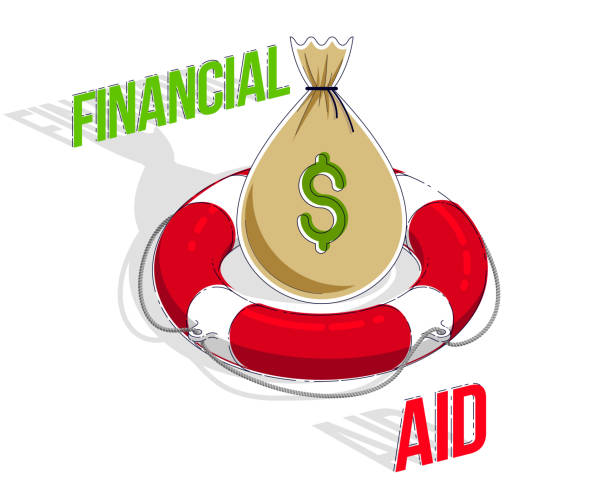Grants and Sponsorships – An Ultimate Guide 2024!
Are ready to turn your vision into reality? Examine unparalleled opportunities through our grants and sponsorships programs. Explore the pathway to funding success apply now and watch your projects thrive.

What Are Grants?
Grants represent financial support allocated to non-profit organizations and selected entities, such as schools and NGOs, to cover the expenses associated with specific projects or programs. Non-profits initiate the grant process by submitting proposals outlining their project details and the required funding. These proposals undergo a competitive review process, and only a subset of projects or programs secure the requested funding. Importantly, grants are exclusively designated to support the activities outlined in the grant proposals, and their duration is typically confined to the specified time period outlined in the proposal.
READ ALSO: Understanding USA Grant Applications: A Basic Guide 2024!
Why Are Grants Important?
Grants serve as essential resources for non-profits, enabling them to initiate new projects, acquire crucial equipment or training, and engage in research. For many non-profits, securing additional funds is often challenging, especially when faced with the need to outfit a laboratory, train staff for evolving healthcare regulations, or hire personnel to develop innovative yet costly exhibits. Grantmakers play a pivotal role in facilitating the growth and innovation of non-profit organizations.
The advantages of grants are multifaceted
1. Free Money: Unlike loans, grants do not require repayment, and recipients are not obligated to provide services in exchange. Completing the proposed project, submitting a report detailing outcomes, and the process is complete.
2. Facilitating Large Purchases: Small non-profits may find it daunting to afford significant expenses like computers, furniture, software, and other equipment necessary for launching vocational training programs. Grants often emerge as the most viable solution in such scenarios.
3. Supporting Risk-Taking: For artists operating outside mainstream norms, sustaining a livelihood can be challenging. Grants for individual artists provide the financial backing to explore and create, even when the resulting work may not guarantee immediate commercial success but holds artistic significance.
4. Enhancing Credibility: Organizations that receive funding from reputable sources, such as the National Endowment for the Arts, gain enhanced credibility. Such backing contributes to a positive perception, reinforcing the seriousness and legitimacy of the organization, especially when compared to those relying on credit alone.
What Receives Support from Grants?
It’s crucial to recognize that grants have a finite duration. Consequently, they may not be the ideal funding solution for sustaining programs over the long term, mainly if ongoing support relies heavily on fees or institutional budgets. When considering grant proposals, it is advisable to target the following expenses:
1. One-time Launch or Expansion Costs:
– Procuring equipment, renovating space, or securing short-term consulting services are one-time expenses that align well with grant funding.
2. Short-term Projects:
– Grants are well-suited for financing short-term projects with a defined timeline. This may include research initiatives, publications, video production, and similar endeavors that can be completed within a foreseeable period.
3. Seed Funding for Ongoing Programs:
– Grants can provide crucial seed money for sustained programs requiring long-term support from alternative sources. This is particularly beneficial for initiatives like inaugurating a museum, launching a dance company, or covering start-up costs for ongoing programs.
4. Professional Development:
– Grant proposals can effectively target professional development opportunities. Whether it’s training staff to navigate new laws, incorporating novel program elements, or adapting to new software, grants can support these essential training endeavors.
Types of Grants
Grants are various, each tailored to specific purposes and recipients. Here are some common types of grants:
1. Project Grants
– These grants are awarded to support a specific project or initiative. Applicants outline the project’s goals, budget, and timeline in their proposals.
2. Operating Grants
– Operating grants provide funding for the day-to-day activities of an organization. They help cover basic operational costs, such as salaries, utilities, and rent.
3. Research Grants
– Designed for individuals or organizations engaged in research activities, these grants fund scientific, academic, or investigative research projects.
4. Capacity-building Grants
– Aimed at strengthening the overall capacity of an organization, these grants may support activities like staff training, technology upgrades, or infrastructure improvements.
5. Program Development Grants
– Funding for the creation, expansion, or enhancement of specific programs within an organization, such as educational initiatives, community outreach, or cultural projects.
6. Seed Grants
– Seed grants provide initial funding to kickstart a new project or program. They are often used to demonstrate feasibility and attract additional support.
7. Matching Grants
– These grants require the recipient to secure additional funding from other sources, with the grantor committing to match the funds raised up to a certain amount.
8. Capital Grants
– Capital grants finance the acquisition, construction, or renovation of physical assets, such as buildings, facilities, or equipment.
9. Nonprofit Capacity Grants
– Specifically targeting non-profit organizations, these grants aim to enhance their effectiveness, governance, and sustainability.
10. Fellowships and Scholarships
– These grants financially support individuals pursuing academic studies, research projects, or professional development.

11. Community Development Grants
– Geared towards supporting initiatives that contribute to the well-being and development of communities, these grants fund projects like housing, infrastructure, and social programs.
12. Environmental Grants
– Environmental grants focus on projects and programs dedicated to conservation, sustainability, and addressing environmental challenges.
13. Humanitarian Grants
– Aimed at providing aid and support in times of crisis or disaster, humanitarian grants assist organizations involved in disaster response, relief, and recovery efforts.
14. Arts and Culture Grants
– These grants support artistic endeavors, cultural initiatives, and creative projects, including visual arts, performing arts, and cultural preservation.
READ ALSO: Grants For Private Schools – An Amazing Guide 2024!
Sponsorships
What Are Sponsorships?
Sponsorships are financial or in-kind support businesses, organizations, or individuals provide to fund events, activities, projects, or individuals in exchange for promotional benefits. Unlike grants, sponsorships involve a mutual exchange where the sponsor expects to receive marketing or branding opportunities as a return on their investment. Sponsorship agreements are typically established through formal contracts or agreements outlining the terms and conditions of the partnership.
Key characteristics of sponsorships include:
1. Mutual Benefit
– Sponsorships are mutually beneficial arrangements where both parties gain value. The sponsor provides financial support, and in return, they receive exposure, visibility, and promotional opportunities associated with the sponsored entity.
2. Promotional Benefits
– Sponsors often seek promotional benefits as part of the sponsorship agreement. This may include logo placement, brand mentions, advertising space, or other forms of visibility during the sponsored event or within the sponsored content.
3. Diverse Sponsorship Opportunities
– Sponsorships can cover a wide range of areas, including sports events, cultural festivals, community programs, educational initiatives, and individual pursuits. The scope of sponsorships is versatile, catering to various industries and interests.
4. Financial and In-Kind Support
– Sponsors may provide financial support, goods, services, or a combination of these to the sponsored entity. In-kind sponsorships involve the provision of goods or services rather than direct monetary contributions.
5. Relationship Building
– Sponsorships contribute to relationship building between sponsors and the entities they support. Successful sponsorships can lead to long-term partnerships and collaborations.
6. Customized Agreements
– Sponsorship agreements are often customized based on the needs and goals of the sponsor and the sponsored entity. Terms may include the duration of the sponsorship, the amount of financial support, specific promotional activities, and any exclusivity clauses.
7. Visibility and Exposure
– Sponsors seek visibility and exposure to their target audience through the sponsored entity. This exposure can include logo placement, mentions in promotional materials, social media coverage, and other promotional channels associated with the sponsored activity.
8. Event and Project Support
– Sponsorships commonly support events, projects, or ongoing activities that align with the sponsor’s brand values, target audience, or corporate social responsibility initiatives.
Sponsorships are vital in funding various initiatives and are prevalent in sports, entertainment, arts, culture, and community development. The success of a sponsorship often depends on the alignment of interests and the ability of both parties to fulfill their respective roles in the partnership.
Why Are Sponsorships Important?
Sponsorships materialize as tangible outcomes of collaborative efforts between non-profit organizations and businesses at the local level. When a company chooses to sponsor your non-profit, it signifies their belief that an affiliation with your organization will positively impact their reputation and potentially attract additional business. Additionally:
1. Continuity in Sponsorships:
– Establishing a positive rapport with a sponsor opens the door to ongoing support. You can likely secure the same sponsor for consecutive years, as a positive relationship tends to endure over time.
2. Enhanced Awareness through Sponsorships:
– Sponsorships serve as a means to boost awareness. For instance, when a local sporting goods store sponsors your non-profit youth sports organization, they leverage the opportunity by showcasing information about your non-profit and its initiatives within their store.
3. Cultivation of Goodwill:
– Support from local businesses generates positive word-of-mouth. As news spreads about the backing from these businesses, other enterprises become intrigued by your non-profit’s work. This opens avenues for additional sponsorships, and fosters increased volunteerism and engagement in your non-profit activities, both from businesses and individual supporters.
What Funding Do Sponsorships Provide?
Given that most sponsorships are granted in exchange for marketing and/or advertising exposure, the crux of sponsorship opportunities lies in visibility. Therefore, it is logical to seek sponsors for public events or programs where corporate logos can be prominently showcased to the general public. Here are several types of projects ideally suited for sponsorship:
1. Performances:
– Whether your non-profit involves a youth orchestra, a local community theatre, or a regional dance group, sponsors can be offered visibility through inclusion in your program, recognition in press releases, and mentions at the commencement of each performance.
2. Exhibitions:
– Healthcare corporations may sponsor health-related exhibits, while insurance companies and banks might support art exhibitions. Toy companies, for instance, can back new exhibits at children’s museums, all in exchange for a prominent display of their name on walls and inclusion in press materials.
3. Sports Programs:
– Little League, Challenger Leagues, Pop Warner, and various sports leagues rely on corporate sponsors to contribute towards uniforms, transportation, field maintenance, and other associated expenses. Sponsors invest in these programs expecting to have their logos featured on caps, shirts, and websites.
4. Public Fundraising Events:
– Corporate sponsors often assist in covering the costs of fundraising runs, walks, auctions, and similar events. They do so anticipating that their name will be linked to your commendable work and/or their products will be showcased at events likely attended by their clientele.
Types of Sponsorships
Sponsorships come in various forms, tailored to meet the needs and objectives of both sponsors and the entities they support. Here are some common types of sponsorships:
1. Event Sponsorship
– Companies or individuals provide financial support for specific events, such as conferences, festivals, sports competitions, or cultural gatherings, in exchange for branding and promotional opportunities.
2. Product Sponsorship
– Sponsors provide products or services rather than monetary support. This often involves providing goods for an event or program in exchange for visibility and promotion.
3. Media Sponsorship
– Media organizations may sponsor events or programs by providing advertising space, coverage, or promotional support in exchange for acknowledgment and visibility associated with the sponsored content.
4. Team or Athlete Sponsorship
– Companies sponsor sports teams or individual athletes, offering financial support or products in exchange for visibility through team uniforms, equipment branding, and promotional activities.
5. Venue Sponsorship
– Sponsors support venues, such as theaters, stadiums, or conference centers, in exchange for naming rights, prominent signage, and promotional opportunities associated with the venue.
6. Cause-related Sponsorship
– Companies align themselves with a particular cause or social issue, providing financial or in-kind support to organizations working in that space. This type of sponsorship is often aimed at enhancing the sponsor’s corporate social responsibility image.
7. Broadcast Sponsorship
– Sponsors associate themselves with televised or streamed content, providing financial support in exchange for promotional spots, product placements, or exclusive advertising rights during broadcasts.
8. Education Sponsorship
– Companies sponsor educational initiatives, institutions, or programs, contributing funds or resources to support learning opportunities in exchange for branding and recognition.
9. Celebrity Sponsorship
– Brands may sponsor celebrities or influencers, either financially or through product endorsements, to leverage the individual’s popularity and audience reach for promotional purposes.
10. Technology Sponsorship
– Sponsors provide technological support or equipment for events, conferences, or programs, gaining visibility through their association with cutting-edge technology.
11. Community Sponsorship
– Local businesses may sponsor community events, charities, or initiatives to strengthen ties with the local population and enhance their community image.
12. Employee Engagement Sponsorship
– Sponsors support programs or events to engage and reward employees and enhance their relationship with the workforce.
13. Tour Sponsorship
– Companies may sponsor tours of musical bands, theatrical productions, or other traveling performances, gaining exposure in various locations.
14. Influencer Sponsorship
– Brands collaborate with social media influencers or online personalities, providing sponsorship in exchange for promotion and visibility among the influencer’s followers.
Sponsorships can take on various structures and arrangements, and the specific terms are often outlined in formal agreements or contracts between the sponsor and the entity being sponsored.
Different Between Grants and Sponsorships
Grants and sponsorships are distinct forms of financial support, each with its own characteristics, purposes, and expectations. Here are key differences between grants and sponsorships:
1. Intent and Purpose
– Grants: The primary purpose of grants is to provide financial assistance for specific projects, programs, or initiatives that align with the goals and mission of the granting organization. Grants are often awarded based on merit and the potential impact of the proposed project.
– Sponsorships: Sponsorships are primarily driven by marketing and promotional considerations. Sponsors provide financial or in-kind support in exchange for visibility, branding opportunities, and promotional benefits associated with the sponsored entity or event.
2. Recipients
– Grants: Grants are typically awarded to non-profit organizations, educational institutions, researchers, or individuals to support various activities, including research, education, community development, and the arts.
– Sponsorships: Sponsorships are commonly provided to various entities, including non-profits, sports teams, events, individuals, and businesses. The focus is on promoting the sponsor’s brand or products through association with the sponsored entity.
3. Selection Process
– Grants: Grant applications go through a competitive selection process, where proposals are evaluated based on specific criteria such as project feasibility, impact, and alignment with the grantor’s mission. Selection is often merit-based.
– Sponsorships: Sponsorship agreements are typically negotiated between the sponsor and the sponsored entity. The decision to sponsor is driven by the sponsor’s marketing goals, target audience, and the visibility offered by the sponsored opportunity.
4. Expectations and Accountability
– Grants: Grant recipients are expected to fulfill the objectives outlined in their proposals. They are often required to submit reports detailing the use of funds, project outcomes, and the impact of the supported activities.
– Sponsorships: Sponsors expect visibility and promotional benefits in return for their support. The success of a sponsorship is often measured by the exposure and brand recognition achieved through the sponsored entity or event.
5. Duration and Renewal
– Grants: Grants have a defined duration and are awarded for specific projects or periods. Renewal is contingent on a new application process.
– Sponsorships: Sponsorships can be ongoing and may extend beyond a single event or project, especially if a positive relationship is established between the sponsor and the sponsored entity.
6. Financial vs. Marketing Focus
– Grants: The primary focus of grants is on providing financial support to fulfill a specific need or goal. The emphasis is on the impact and outcomes of the funded activities.
– Sponsorships: Sponsorships are driven by marketing considerations, with the sponsor seeking visibility, brand exposure, and promotional opportunities as a return on their investment.
READ ALSO: Is the DHHS Grant Real? A Comprehensive Guide
Benefits of Grants and Sponsorships
Grants and sponsorships offer various benefits to organizations, individuals, and initiatives. Understanding these advantages can help entities make informed decisions about pursuing either funding option. Here are some benefits of grants and sponsorships:
Benefits of Grants
1. Financial Support:
– Grants provide direct financial assistance, helping organizations and individuals fund specific projects, programs, or research initiatives.
2. Project Funding:
– Grants are often designed to support specific projects or activities, enabling recipients to pursue and accomplish well-defined objectives.
3. Independence:
– Grant funds are typically provided without the expectation of direct reciprocity. Recipients have the autonomy to implement their projects according to their proposed plans.
4. Long-Term Impact:
– Successful grant-funded projects can have long-term impacts on communities, industries, and fields of study, contributing to positive change and development.
5. Credibility:
– Being awarded grants from reputable sources enhances the credibility and reputation of organizations and individuals, signaling recognition of their work and contributions.
6. Research Opportunities:
– Research grants provide support for scientific, academic, or investigative studies, allowing researchers to explore new ideas and contribute to knowledge in their respective fields.
7. Capacity Building:
– Some grants are specifically designated for capacity-building activities, such as staff training, infrastructure improvements, and organizational development.
8. Community Development:
– Community development grants contribute to the improvement of localities by supporting projects that address social, economic, and environmental challenges.
Benefits of Sponsorships
1. Financial Support and In-Kind Contributions:
– Sponsors provide financial assistance and in-kind contributions, such as products, services, or equipment, to support events, organizations, or individuals.
2. Promotional Opportunities:
– Sponsorships offer visibility and promotional benefits, allowing sponsors to showcase their brand through logo placement, advertising, and other promotional channels associated with the sponsored entity.
3. Brand Exposure:
– Sponsors gain exposure to a targeted audience, enhancing brand recognition and increasing the likelihood of attracting new customers or clients.
4. Relationship Building:
– Sponsorships foster relationships between sponsors and the sponsored entity, leading to potential long-term partnerships and collaborations.
5. Customized Agreements:
– Sponsorship agreements can be tailored to meet the specific needs and goals of both parties, allowing for flexibility in the terms of the partnership.
6. Support for Events:
– Sponsorships are instrumental in supporting events, sports programs, cultural festivals, and other activities contributing to community engagement and enrichment.
7. Employee Engagement:
– Sponsors can engage employees through sponsorships of events or initiatives, fostering a sense of community involvement and corporate social responsibility.
8. Strategic Alliances:
– Sponsoring organizations can strategically align themselves with entities that share similar values or interests, creating mutually beneficial partnerships.
How to Apply For Grants and Sponsorships
Applying for grants and sponsorships involves a systematic approach, and the process can vary depending on the specific requirements of the granting organization or sponsor. Here is a general guide on how to apply for grants and sponsorships:
Applying for Grants
1. Identify Potential Grant Opportunities:
– Research and identify grants that align with your project, organization, or individual needs. Use online databases, grant directories, and websites of grant-making organizations.
2. Review Grant Guidelines:
– Carefully read the guidelines and eligibility criteria provided by the granting organization. Ensure that your project or initiative aligns with the mission and focus areas of the grant.
3. Develop a Detailed Proposal:
– Craft a comprehensive grant proposal that clearly outlines your project’s objectives, methodology, budget, timeline, and expected outcomes. Tailor your proposal to address the specific requirements of the grant application.
4. Prepare Required Documentation:
– Gather any required documentation, such as financial statements, letters of support, resumes, and any additional materials specified in the grant guidelines.
5. Create a Budget:
– Develop a detailed budget for your project, clearly indicating how the grant funds will be allocated. Ensure that your budget is realistic and aligns with the guidelines of the granting organization.
6. Complete the Application Form:
– Fill out the grant application form provided by the granting organization. Some grants may require an online application, while others may use a paper-based submission process.
7. Submit the Application:
– Submit your grant application by the specified deadline. Ensure that you have included all required documents and information.
8. Follow-Up:
– After submission, monitor the application process and be prepared to respond to any additional requests for information. If successful, adhere to reporting requirements and deadlines specified by the granting organization.
Applying for Sponsorships
1. Define Your Value Proposition:
– Clearly articulate what your project, event, or organization can offer to potential sponsors. Identify the unique value and visibility they will gain through sponsorship.
2. Research Potential Sponsors:
– Identify businesses, organizations, or individuals that align with your values and goals. Consider their target audience, industry, and corporate social responsibility priorities.
3. Create a Sponsorship Proposal:
– Develop a professional sponsorship proposal outlining the details of your project or event, sponsorship levels, benefits, and promotional opportunities. Clearly communicate how the sponsorship aligns with the sponsor’s objectives.
4. Customize Proposals:
– Customize your proposals for different potential sponsors, addressing their specific needs and interests. Highlight how the sponsorship will contribute to their brand visibility and marketing goals.

5. Negotiate Terms:
– Be open to negotiation. Discuss terms, benefits, and expectations with potential sponsors to create a mutually beneficial partnership. Consider factors such as exclusivity, logo placement, and promotional activities.
6. Formalize Agreements:
– Once terms are agreed upon, formalize the sponsorship agreement through a written contract. Clearly outline the rights and responsibilities of both parties, including financial commitments, deliverables, and timelines.
7. Activate and Promote:
– Activate the sponsorship during the project or event. Fulfill the agreed-upon benefits and actively promote the sponsor through various channels, including signage, social media, and event programs.
8. Express Gratitude:
– After the sponsorship period, thank the sponsor for their support. Provide them with a summary of the benefits achieved and any relevant metrics. Maintain a positive relationship for potential future sponsorships.
READ ALSO: USAID Grants – A Comprehensive Guide 2024!
Final Thoughts on Grants and Sponsorships
Grants and sponsorships play pivotal roles in providing financial support to a diverse array of projects, organizations, and initiatives. Grants, rooted in philanthropy and public service, offer direct funding for projects with a focus on impact and sustainability. Non-profits, researchers, and individuals often seek grants to bring their ideas to fruition and contribute positively to their communities and fields.
On the other hand, sponsorships represent a dynamic partnership between entities seeking exposure and those providing financial or in-kind support. Driven by marketing considerations, sponsorships leverage visibility, branding opportunities, and promotional benefits. Businesses, organizations, and individuals engage in sponsorships to enhance their visibility, connect with target audiences, and align themselves strategically with events, causes, or entities that resonate with their values.
Both grants and sponsorships contribute to the growth and development of various sectors, fostering innovation, community engagement, and positive change. The choice between grants and sponsorships often depends on the nature of the project, the goals of the funding entity, and the expectations of both parties involved. Whether through grants or sponsorships, the overarching goal is to create meaningful partnerships that enable impactful initiatives and contribute to the betterment of society.
